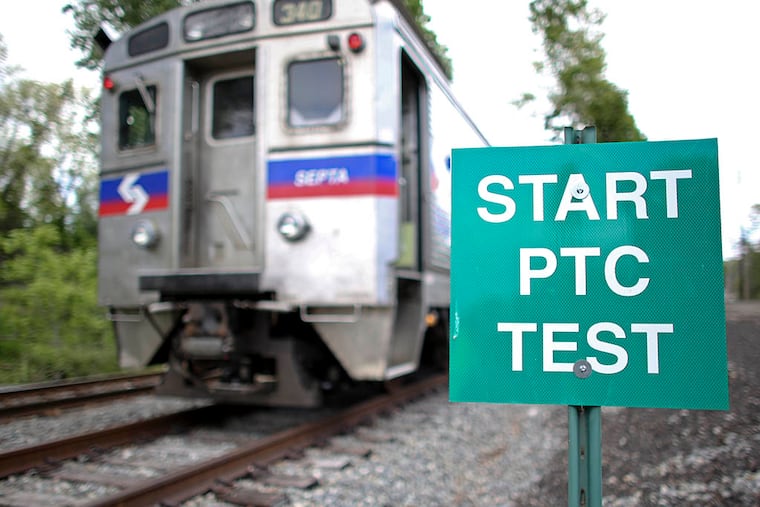Feds order Amtrak to improve safety on dangerous curves
Responding to last week's deadly wreck of Amtrak Train 188, the Federal Railroad Administration on Thursday ordered Amtrak to improve safety on the Northeast Corridor's dangerous curves.

Responding to last week's deadly wreck of Amtrak Train 188, the Federal Railroad Administration on Thursday ordered Amtrak to improve safety on the Northeast Corridor's dangerous curves.
The FRA's emergency order requires Amtrak to identify within five days all curves on the Boston-to-Washington corridor where there is a drop of more than 20 m.p.h. in the speed limit from the approaching straightaway.
Then Amtrak must install an automatic control system that would slow speeding trains at the identified curves, or come up with an acceptable alternative.
Amtrak must submit its plan for dealing with those curves within 20 days, the FRA said.
The FRA had said Saturday it would issue such an emergency order.
"The most clarifying thing I've seen come out of this is how important PTC [positive train control] is," Sarah Feinberg, acting director of the FRA, said Thursday. "Here we have the lives of 240 people in the hands of an individual, and we have to hope he doesn't make a bad decision or he doesn't get distracted or he doesn't have a medical event like a heart attack. We can do better than that."
An Amtrak spokeswoman said Thursday that Amtrak has identified all of the curves and "is currently working with FRA on proposed mitigations."
The order also required Amtrak to install the automatic braking system on the northbound side of the Frankford Junction curve where the May 12 accident occurred, killing eight and injuring 200.
Amtrak said it did so when it installed the necessary track circuitry as part of its repair of the curve before resuming service Monday.
Such a speed-control system was already in place on the southbound side of the curve.
Only five curves on the 457-mile corridor now have that speed protection: Frankford Junction; Elizabeth, N.J.; southbound near Baltimore; northbound approaching Wilmington; and southbound approaching Washington.
"The steps we have ordered Amtrak to take will immediately improve safety on this busy corridor," Feinberg said. "But in the days and weeks to come, we will also do more - while FRA will continue to push Amtrak and other commuter lines to achieve full implementation of positive train control, we will also work with them in the short term to immediately address potential over-speed issues."
Also Thursday, Senate Democrats called for more federal funding for Amtrak and for positive train control, which investigators said would have prevented last week's crash.
"Philadelphia was preventable, and it was predictable," Sen. Richard Blumenthal (D., Conn.) said. He called the lack of positive train control on all rail lines "a national disgrace."
"Increased funding for PTC is especially critical at a time when commuter agencies grapple with the huge investments needed to install this technology," said a letter from 23 senators to the leaders of the Appropriations subcommittee on transportation, housing, and urban development.
"To date, Congress has only allocated $50 million specifically for PTC, yet costs on commuter rail systems nationwide are expected to exceed $2 billion."
Sen. Bob Casey (D., Pa.), one of the signers, said Thursday that legislators "should have the same sense of urgency and duty that first responders had in Philadelphia last week."
Positive train control is a system designed to prevent accidents by remotely stopping speeding trains and enforcing other controls on train movements.
It is more sophisticated - and more expensive - than the "automatic train control" that has been in use for decades by Amtrak and other railroads.
Congress in 2008 ordered all passenger railroads and major freight railroads to install positive train control by the end of 2015.
Of 41 affected railroads, only three - SEPTA, Metrolink in Southern California, and Amtrak on most of the Northeast Corridor - expect to meet the deadline.
The others have said they are being delayed by a lack of money and the inability to obtain the necessary radio spectrum for operating the system.
The Philadelphia derailment "should show us how unacceptable it is" to extend the deadline for PTC by five years or seven years or longer, Feinberg said.
She said the FRA will push railroads to meet the Dec. 31 deadline. "It's important that people recognize the deadline will be enforced," she said, noting that enforcement could range from shutting railroads down to nudging them forward. "There is a deadline, and you should be working to meet it."
Casey said the failure of Congress to adequately fund Amtrak operations and maintenance has put the railroad "in the terrible position of having to choose between safety like positive train control . . . and investing in fixing crumbling bridges and crumbling infrastructure."
The Northeast Corridor needs $21 billion in replacements and upgrades, according to the Northeast Corridor Commission, a coalition of Northeastern states and corridor users.
One tunnel in Baltimore that needs replacement is more than 140 years old. Tunnels under the Hudson River between Manhattan and New Jersey are more than 100 years old.
"I think some members of both parties have some explaining to do," Casey said Thursday.
Several of the Democrats who signed the letter with Casey calling for installing positive train control "as soon as possible" earlier this year advocated for extending the deadline for years.
Sens. Blumenthal and Charles Schumer (D., N.Y.) introduced a bill in April that would push the deadline to 2018. Sens. Dianne Feinstein (D., Calif.), Barbara Boxer (D., Calif.), and Kirsten Gillibrand (D., N.Y.) were cosponsors.
Sens. Bill Nelson (D., Fla.) and Claire McCaskill (D., Mo.) were cosponsors of a bill introduced in March to extend the deadline to 2020.
215-854-4587 @nussbaumpaul
Inquirer staff writer Jonathan Tamari contributed to this article.